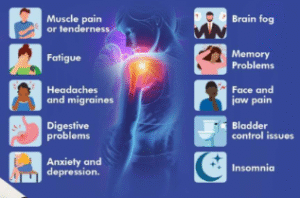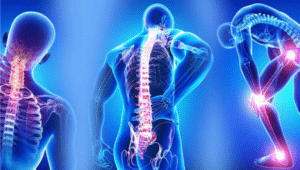Beyond the Breaking Point: Understanding the Full Impact of Stage 3 Fibromyalgia on Life and Wellness
Stage 3 Fibromyalgia: The Most Disruptive Phase of a Life-Altering Condition
Stage 3 fibromyalgia is often the most severe and life-disrupting phase of this chronic condition. For those who live with fibromyalgia, the journey from early aches to Stage 3 represents a shift from occasional discomfort to a near-constant battle with pain, fatigue, cognitive struggles, and emotional challenges. This stage is marked by an overwhelming presence of symptoms that interfere with personal independence, work ability, and social relationships. Understanding Stage 3 fibromyalgia is essential for patients, caregivers, and healthcare providers who aim to manage the condition with compassion, strategy, and resilience.
What Characterizes Stage 3 Fibromyalgia
Stage 3 fibromyalgia is the final and most intense phase in the progression of fibromyalgia. It is typically diagnosed when the symptoms have become chronic, widespread, and debilitating. In this stage, pain and fatigue are no longer occasional or manageable without intervention. They become daily companions that demand attention, affect decision-making, and often redefine the patient’s identity and lifestyle.
Unlike earlier stages where symptoms come and go, Stage 3 is marked by the near-permanence of discomfort. Daily routines become carefully orchestrated around physical limits. Some people may no longer be able to maintain full-time employment, while others may require assistance with everyday activities.
Symptoms Intensify in Frequency and Severity
In Stage 3, the body feels as if it is constantly under stress. The symptoms that began subtly in earlier stages evolve into persistent and overwhelming physical and cognitive burdens. The most common symptoms include:
- Persistent Widespread Pain: This pain is not confined to a few areas. It radiates throughout the body and often feels like a burning or stabbing sensation that fluctuates in intensity throughout the day.
- Severe Fatigue: Simple activities like grocery shopping, climbing stairs, or even showering may drain energy reserves. Resting rarely results in feeling refreshed.
- Disabling Fibro Fog: Mental clarity continues to decline, with patients struggling to process information, maintain conversations, or concentrate for even short periods.
- Chronic Sleep Disruption: Sleep patterns are significantly disturbed. People in Stage 3 frequently report insomnia, non-restorative sleep, and difficulty maintaining a consistent sleep-wake cycle.
- Heightened Sensitivity: Sensory input becomes exaggerated. Sounds feel louder, lights brighter, and minor physical pressure more painful.
- Emotional Strain: Depression, anxiety, and mood swings become more intense and more frequent due to the ongoing physical challenges and isolation.
This collection of symptoms can be overwhelming and often leads to the development of secondary conditions, such as irritable bowel syndrome, migraines, or temporomandibular joint disorders.
Lifestyle and Functional Impact
Stage 3 fibromyalgia redefines what life looks like for the patient. Daily decisions are centered around energy conservation and symptom management. Activities that were once simple become difficult or impossible. Individuals may experience:
- Reduced Mobility: Movement becomes limited either due to pain or energy levels. Walkers, braces, or other assistive devices may become necessary.
- Inability to Work: Many patients in Stage 3 are forced to reduce hours or leave their jobs entirely. Tasks that require physical or mental stamina become too demanding.
- Strained Relationships: Friends and family members might struggle to understand the invisible but intense symptoms. This can lead to isolation or strained personal bonds.
- Dependency on Caregivers: As the condition advances, some individuals require regular assistance with cooking, cleaning, and even personal hygiene.
Emotional and Psychological Toll
The psychological burden of Stage 3 fibromyalgia is immense. The emotional fallout often includes:
- Feelings of Hopelessness: The lack of cure and persistent nature of symptoms can make individuals feel as if relief is unattainable.
- Identity Loss: Patients often mourn their former selves and the lifestyle they once enjoyed. Losing independence can impact self-esteem and purpose.
- Mental Health Disorders: Clinical depression and generalized anxiety disorder are common comorbidities. Mental health support becomes not just helpful but necessary.
Approaches to Treatment in Stage 3
While there is still no cure for fibromyalgia, Stage 3 requires a multifaceted treatment approach to manage symptoms and improve quality of life. These approaches may include:
- Pharmaceuticals: Patients are often prescribed a combination of medications including anticonvulsants, antidepressants, muscle relaxants, and pain relievers to manage different symptoms.
- Therapeutic Modalities: Physical therapy, occupational therapy, and cognitive behavioral therapy are essential in helping patients cope with both the physical and emotional aspects of the disease.
- Alternative Therapies: Techniques such as acupuncture, massage therapy, and yoga can provide relief when integrated with conventional medicine.
- Lifestyle Adjustments: Dietary changes, gentle exercise, pacing techniques, and a structured routine are essential for conserving energy and minimizing symptom flare-ups.
- Psychological Support: Counseling, peer support groups, and mental health care provide critical outlets for expressing frustration and learning to live with limitations.
Living with Stage 3 Fibromyalgia
Despite its severity, many people learn to live with Stage 3 fibromyalgia through adaptation and support. Success often lies in learning to recognize personal limits, developing strong routines, and cultivating a mindset focused on possibilities rather than restrictions. It is not a life free from challenges, but it can be a life rich with moments of peace, joy, and purpose.
Key survival strategies include:
- Learning to say no without guilt
- Resting before exhaustion hits
- Seeking joy in low-energy activities
- Accepting help and building a support network
Conclusion
Stage 3 fibromyalgia represents the most intense expression of a complex, multifaceted condition. With pain and fatigue becoming daily realities, individuals must adjust their expectations and redefine what it means to live well. While this stage brings profound challenges, it also opens the door to resilience, adaptation, and finding new paths to fulfillment. Through comprehensive care, emotional support, and lifestyle redesign, it is possible to carve out a meaningful existence even in the shadow of chronic illness.



